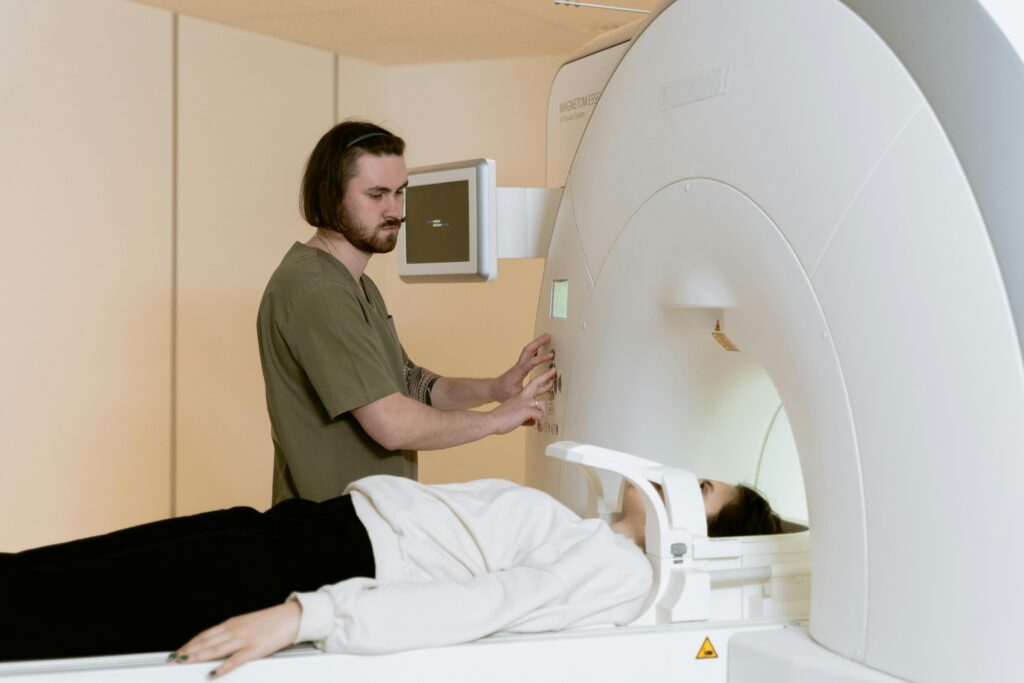The Future of Radiology Technology: Innovations, Costs, and Comparisons
Introduction
Radiology technology is a cornerstone of modern healthcare, allowing for precise diagnosis and treatment of various medical conditions. As technology advances, radiology is becoming more effective, accessible, and affordable. But what lies ahead for this constantly evolving field? This article delves into its history, types, costs, future trends, and challenges, offering insights for both healthcare professionals and patients.
1. The Evolution of Radiology Technology
1.1 The Beginnings of Radiology: A Historical Overview
The discovery of X-rays by Wilhelm Röntgen in 1895 marked a significant breakthrough in medical diagnostics. Early radiology relied on basic X-ray machines, providing limited imaging capabilities. Over time, advancements introduced new imaging methods, enhancing diagnostic accuracy.
1.2 The Shift to Digital Imaging
The transition from film-based radiology to digital imaging revolutionized the field, leading to sharper images, faster processing, and reduced radiation exposure. Digital radiology also facilitates remote diagnostics, improving access to imaging services worldwide.
1.3 Emerging Technologies in Radiology
Modern radiology integrates artificial intelligence (AI), 3D imaging, and augmented reality. AI improves image analysis, reducing human error, while 3D imaging provides detailed views of anatomical structures, assisting in complex medical procedures.
2. Types of Radiology Technology
Different types of radiology technology serve various diagnostic purposes, each with distinct advantages.
| Technology | Primary Use | Key Benefits |
|---|---|---|
| X-ray | Bone and fracture imaging | Fast, cost-effective |
| CT Scan | Cross-sectional imaging | Helps detect tumors, internal injuries |
| MRI | Soft tissue analysis | No radiation, highly detailed imaging |
| Ultrasound | Organ and fetal examination | Safe, real-time results |
| Nuclear Medicine | Functional organ imaging | Early disease detection |
3. AI and Automation in Radiology
3.1 AI-Enhanced Image Analysis
Artificial intelligence enhances diagnostic precision by quickly detecting abnormalities. AI-driven tools assist radiologists in interpreting scans, reducing diagnostic errors and improving efficiency.
3.2 Automation in Radiology Operations
Automation streamlines administrative functions, such as scheduling and reporting, allowing radiologists to focus on patient care. This results in quicker turnaround times for medical imaging results.
3.3 Addressing AI Challenges
While AI in radiology offers many advantages, it also raises ethical and regulatory concerns. Ensuring data security, addressing biases in AI models, and maintaining patient confidentiality are key challenges.
4. Costs and Pricing in Radiology Technology
4.1 Radiology Equipment Costs
| Equipment | Estimated Cost | Common Usage |
|---|---|---|
| X-ray Machine | $50,000 – $200,000 | General diagnostics |
| MRI Scanner | $1M – $3M | Soft tissue imaging |
| CT Scanner | $300,000 – $2M | Internal organ imaging |
| Ultrasound Machine | $10,000 – $200,000 | Organ and pregnancy scans |
4.2 Factors Affecting Costs
Radiology equipment costs depend on initial purchase price, maintenance, training, and operational expenses. Additional costs include insurance, software updates, and regulatory compliance.
4.3 Radiology Procedure Costs for Patients
| Procedure | Average Cost (USA) | Average Cost (Europe) | Average Cost (Asia) |
|---|---|---|---|
| X-ray | $100 – $1,000 | €50 – €500 | $30 – $400 |
| MRI Scan | $1,000 – $5,000 | €500 – €3,000 | $200 – $2,000 |
| CT Scan | $500 – $3,000 | €300 – €2,000 | $100 – $1,500 |
5. Future Trends in Radiology
5.1 AI in Radiology
Advanced AI models are making image analysis faster and more precise, improving early disease detection and treatment planning.
5.2 Portable Imaging Devices
Innovations in portable X-rays and handheld ultrasound devices are increasing accessibility, especially in remote or underserved areas.
5.3 Virtual and Augmented Reality in Radiology
Virtual reality is enhancing radiologist training, while augmented reality is aiding surgeons by overlaying imaging data onto the patient’s body during procedures.
5.4 Sustainable Radiology Practices
Newer imaging technologies focus on reducing radiation exposure and using energy-efficient imaging systems, promoting eco-friendly healthcare solutions.
6. Challenges in Radiology Technology
6.1 High Costs and Limited Accessibility
Radiology technology remains expensive, limiting access in developing regions. Solutions like cost-effective devices and government funding are needed to bridge this gap.
6.2 Data Privacy and Cybersecurity Concerns
With digital imaging and electronic health records, protecting patient data from cyber threats is a growing priority.
6.3 Shortage of Skilled Radiologists
The rising demand for radiology services has led to a need for more trained professionals. Expanding education programs can help address this gap.
7. Choosing the Right Radiology Technology
7.1 Considerations for Healthcare Providers
-
Budget constraints and cost-effectiveness
-
Frequency of imaging procedures performed
-
Availability of technical support and maintenance
7.2 Considerations for Patients
-
Understanding different imaging options
-
Verifying insurance coverage for imaging procedures
-
Availability of modern imaging technologies at local medical facilities
Final Thoughts: The Road Ahead in Radiology
Radiology technology continues to redefine medical diagnostics, making it more accurate and efficient. With AI, automation, and portable imaging gaining traction, healthcare providers and patients alike must adapt to these advancements. The future of radiology holds immense potential for improving patient care and global healthcare accessibility.
FAQs: Common Questions About Radiology Technology
1. Is AI replacing radiologists?
No, AI enhances radiologists’ capabilities but does not replace them. It assists with image analysis, improving efficiency and accuracy.
2. Why are radiology procedures costly?
High costs stem from expensive imaging equipment, maintenance, and the expertise required to operate and interpret results.
3. Which radiology procedure is the safest?
Ultrasound and MRI are considered the safest as they do not use ionizing radiation.
4. Can radiology diagnose all medical conditions?
Radiology is a powerful diagnostic tool but is often used alongside other tests for a more comprehensive assessment.
5. How long does a radiology scan take?
X-rays are completed in minutes, while MRI and CT scans can take 30 minutes to an hour, depending on complexity.

